Sailing across the Pacific is probably the longest stretch we will ever sail in one go. 3,000 nautical miles, which means about 3 weeks nonstop without seeing land. And, you are pretty much on your own out there. If something goes wrong, rescue is far away, most likely.
When we headed off, after waiting a couple of weeks more than what we originally had planned (due to a shipment we had ordered being delayed) in the Galapagos, we were both eager to get going. We had seen many boats come and go for quite some time. Our social media feeds started filling up of them arriving in French Polynesia, and starting to explore these amazing islands.

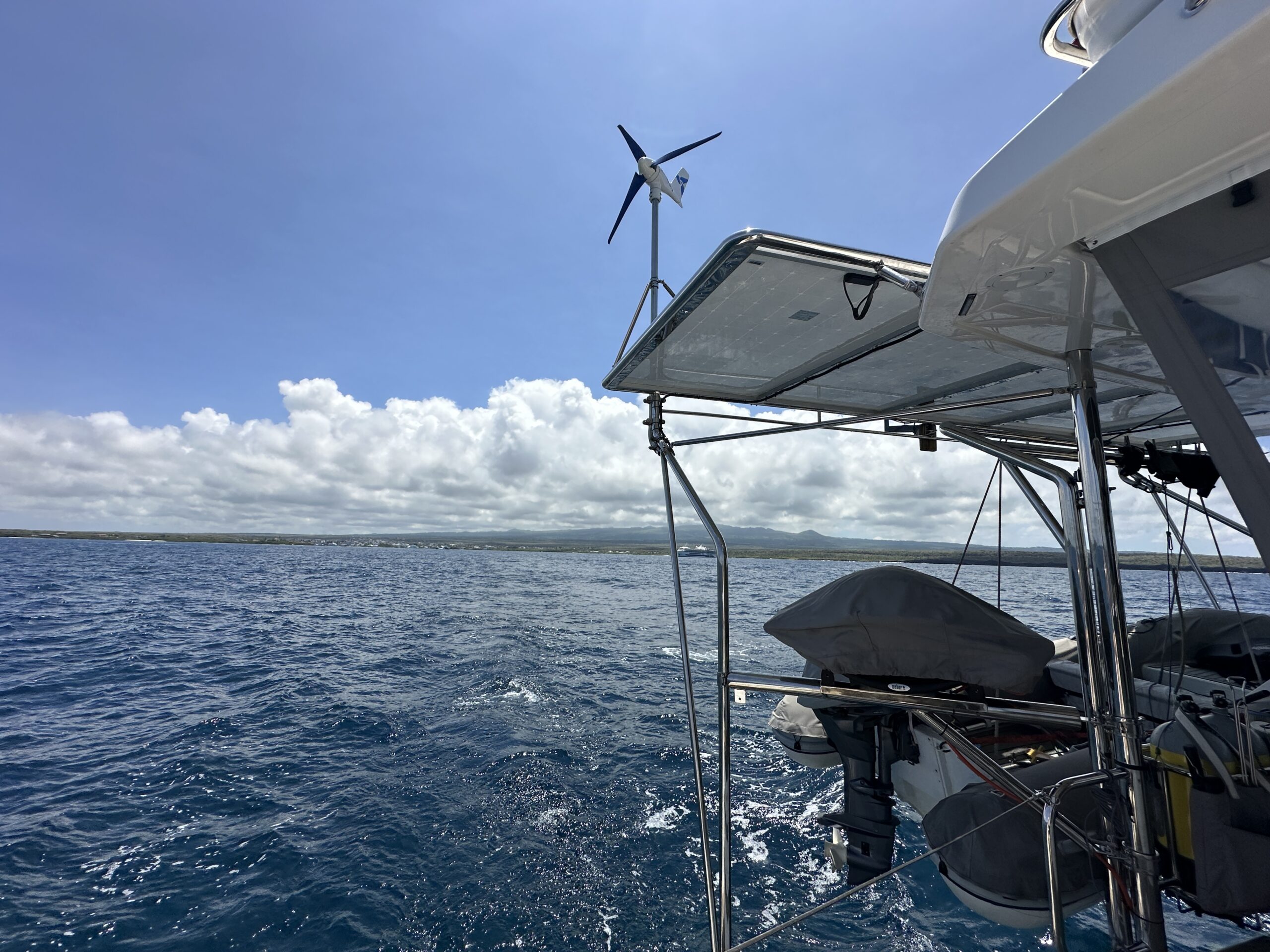
Getting into the vast islands and atolls of the South Pacific, is for most sailors the ultimate dream sailing grounds. This is also an area of the globe neither of us has explored before, so we are quite excited.
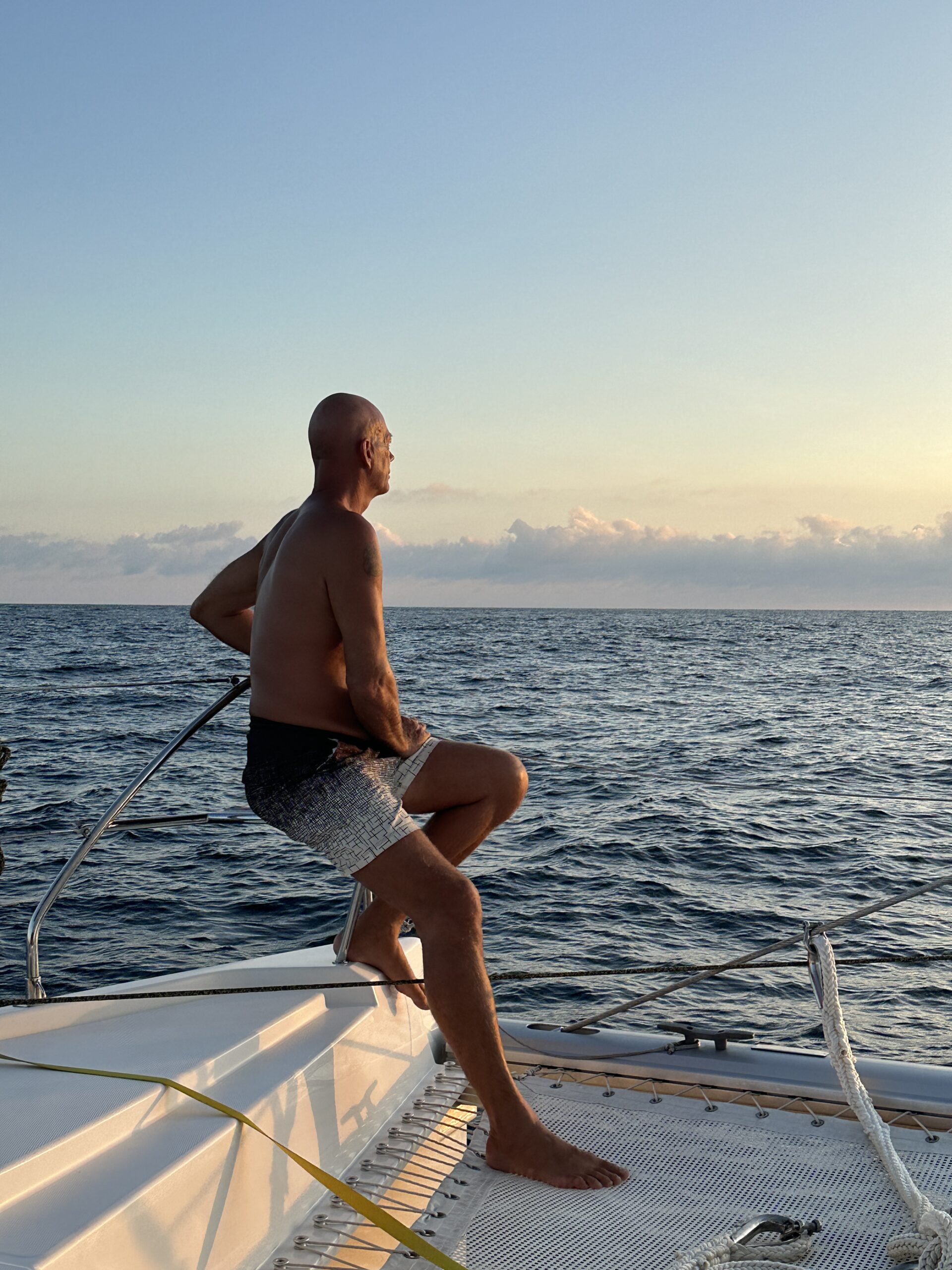
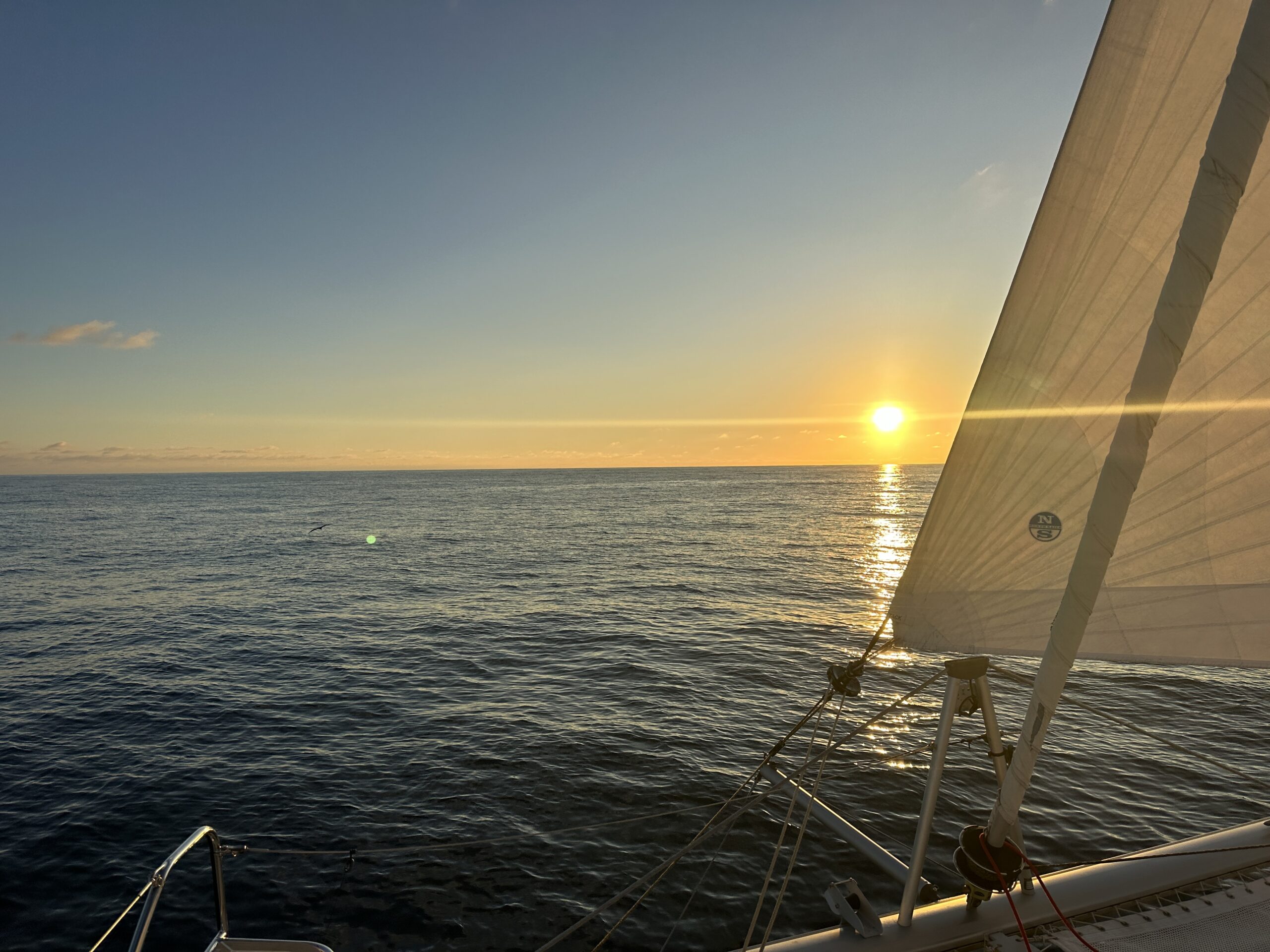
The cyclone season in this area of the Pacific is between November 1st and May 1st. As we left Galapagos on April 27th, we were right on time to make landfall a couple of weeks after the cyclone season has ended.
Many sailors spend the six months sailing to New Zealand before the next year’s cyclone season begins again. French Polynesia is considered an area with a low probability of getting cyclones. Therefore, we plan to spend a year here, including next season’s cyclone season. We have our Long Stay Visas for 12 months, with a possibility of getting an extension.
The first four days of the passage was spent sailing with little wind in choppy seas. The area surrounding Galapagos is well known to have difficult waters to navigate in, as there are four major currents meeting here. On day two, we in fact broke a new record, the least sailed in 24 hours – 64,6 nautical miles. Oh well, at least we were sailing, and not motoring.
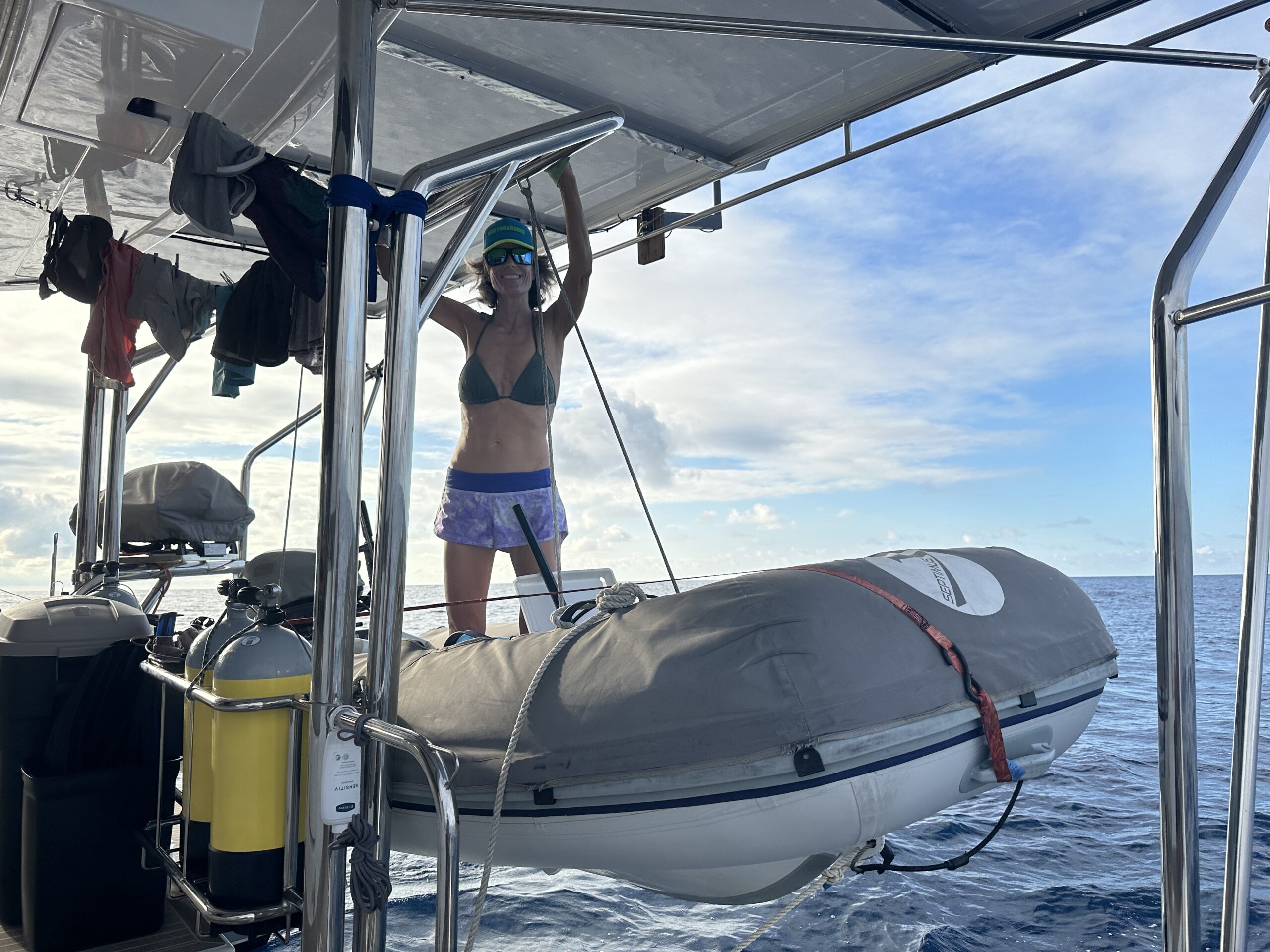
We saw several fishing vessels during these first few days. One of them had eight pangas (open boats made of wood and with outboard motors) associated with the main vessel. Two of them visited our boat, looking for fresh water. We parted with a cag of water for them to share, and they seemed happy 😊
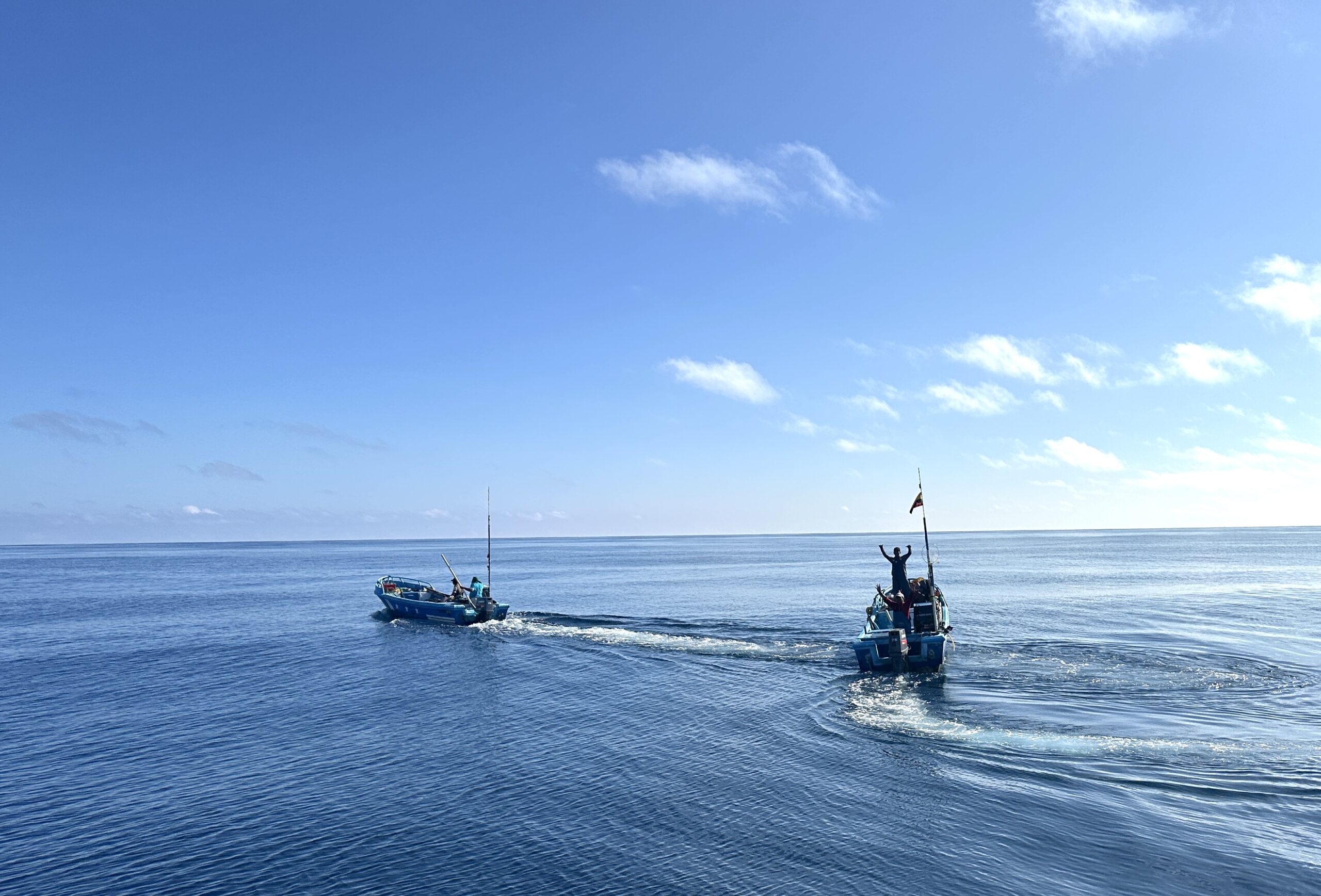
The next few days were spent with decent winds of 18-20 knots TWS and swells of 2-3 meters. On top of these swells were choppy small waves, making the boat very jittery.
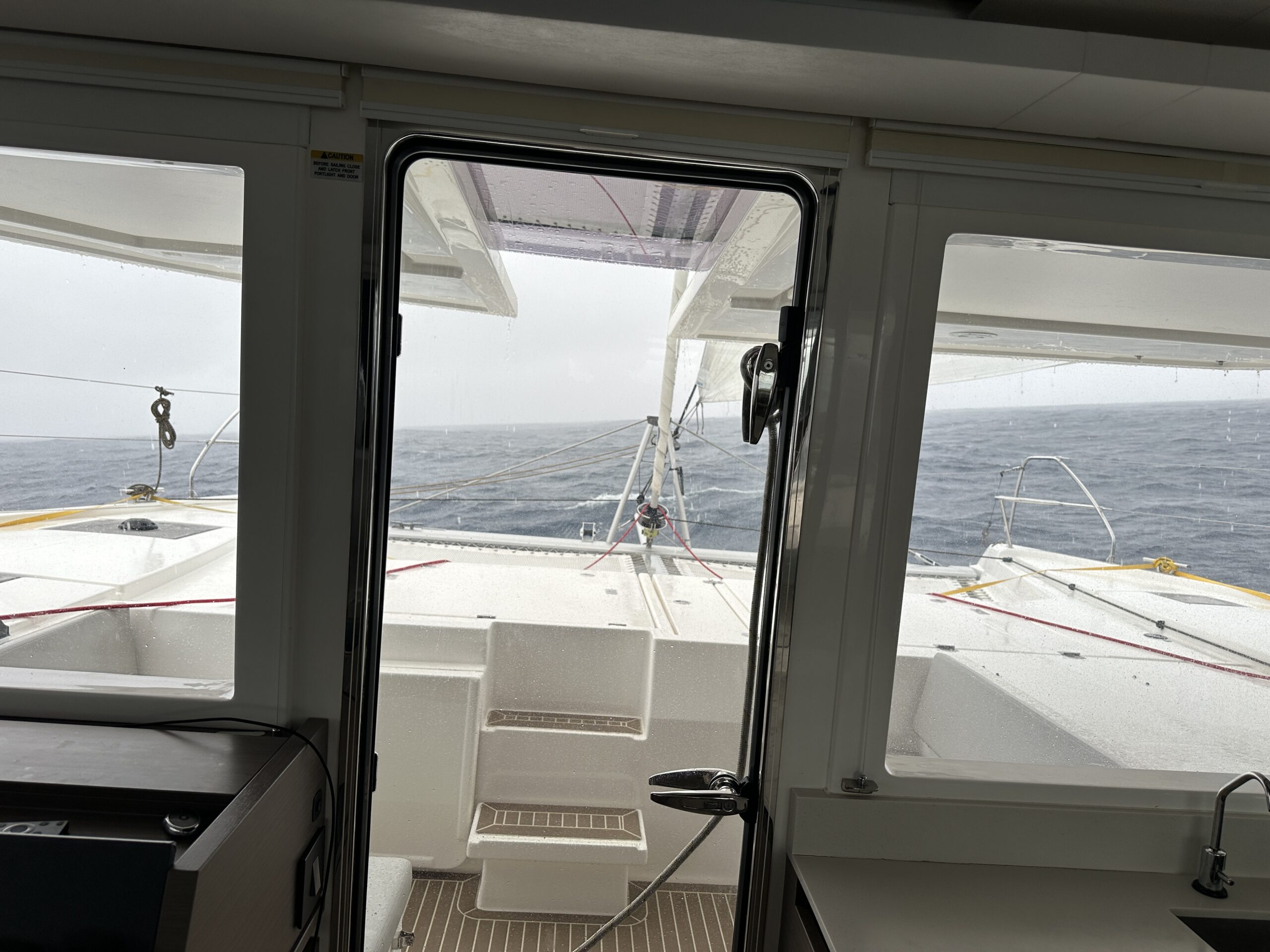
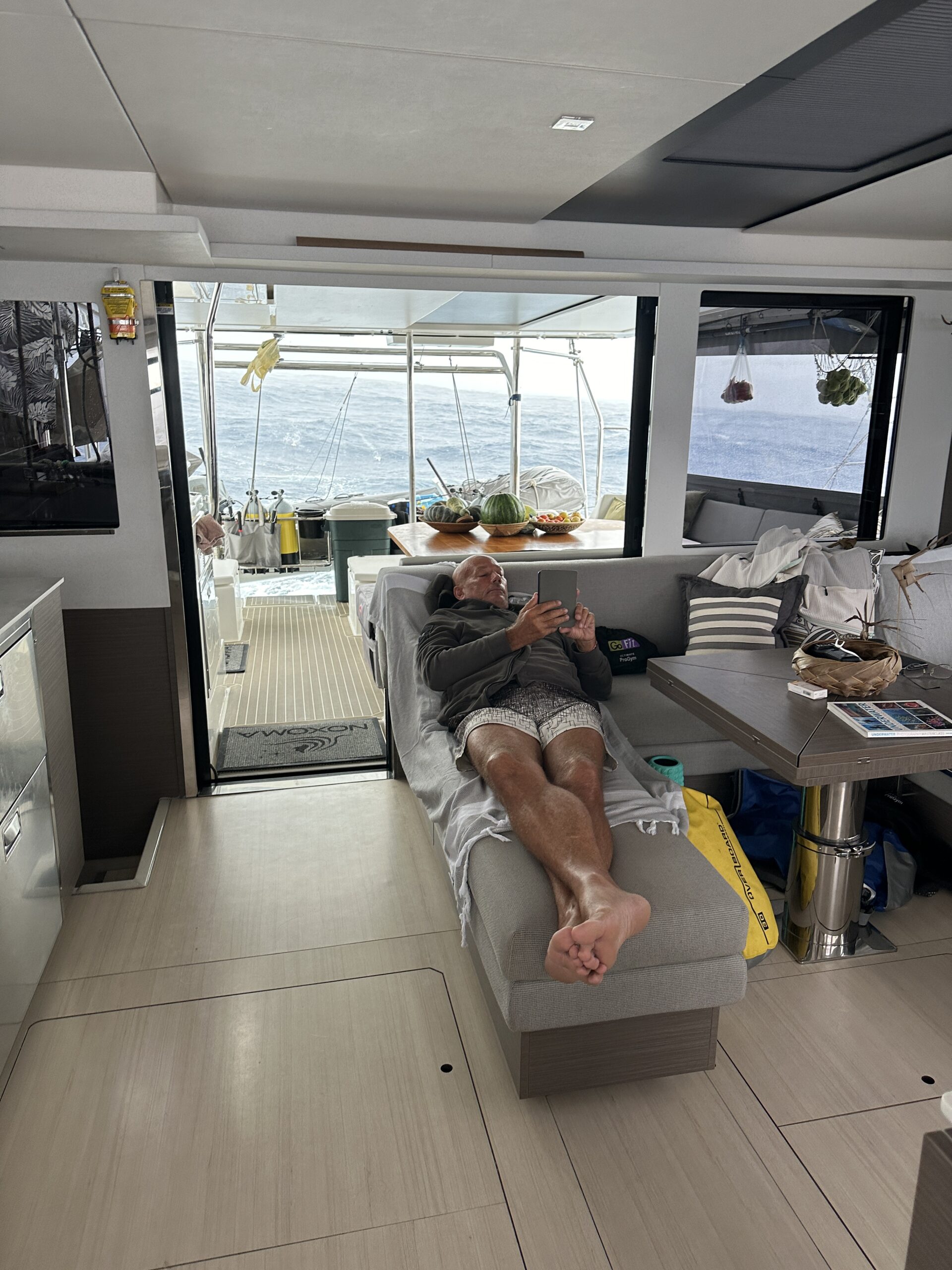
We have been quite surprised that the seas were as disturbed as they have been on this passage. Little did we see of the long, tranquil ocean swells we experienced in the South Atlantic. We have had a total of 2 days with almost flat seas, but even then, the boat was jittery due to the choppy sea.
So, the Pacific passage has not been the smooth sailing we set out to believe it would be. Towards the end of the passage it got better, though, and we actually flew our biggest sail, the 250 m2 Oxley sail, for 8 days straight. We experienced the occasional squall, but the wind speed did not increase substantially during any of them.
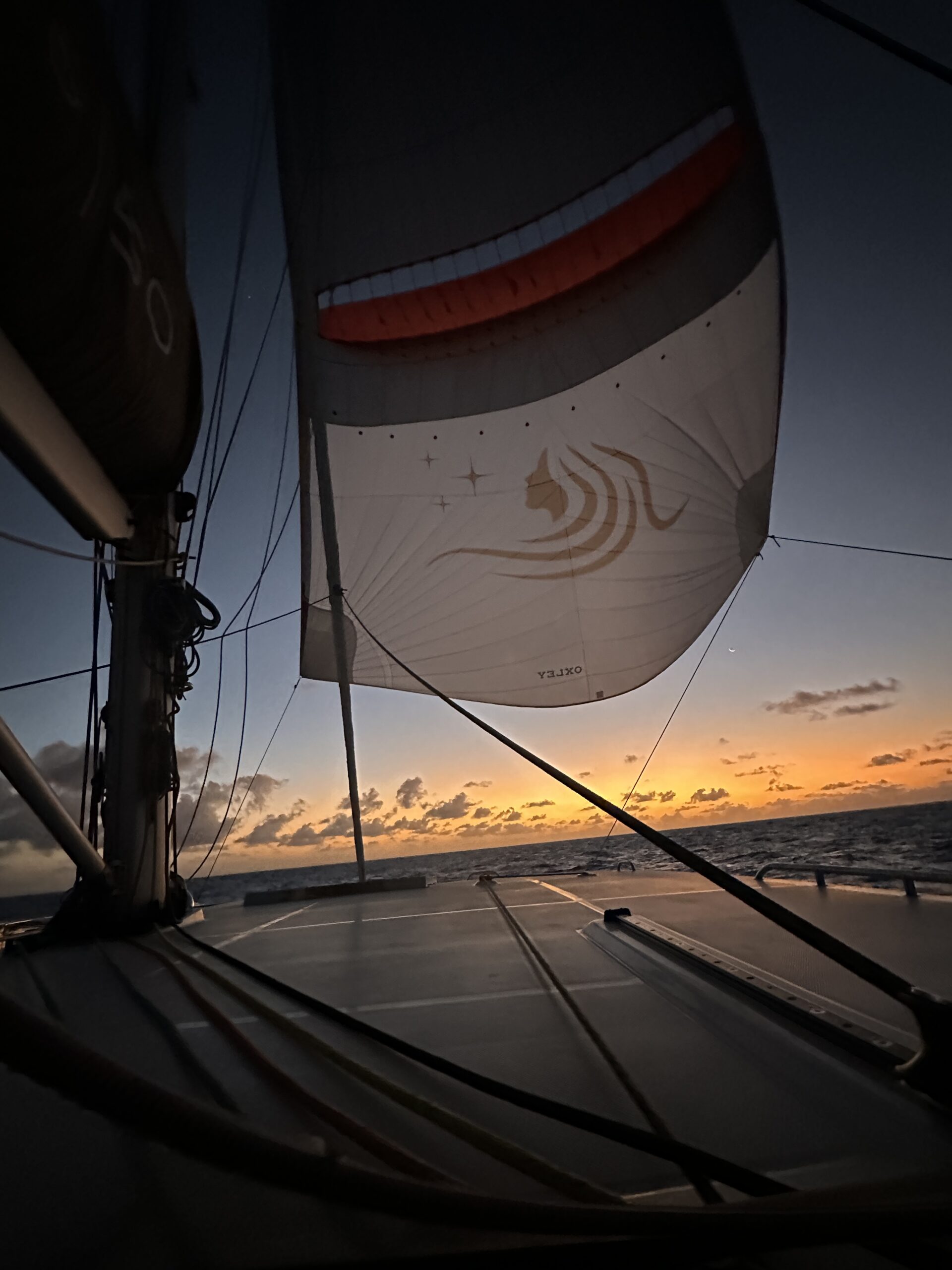
The activities on board are very much focused around getting enough rest. The constant movement of the boat impacts the sleep quality. And, we sleep on shifts. The admiral’s night watch goes from 19:00 to 02:00, and the captain’s goes from 02:00 until the morning, usually around 07:30/08:00.
The high points of the day, are of course the meals. We are very happy with the provisioning we did at Galapagos. We have plenty of fresh fruit, and our freezers are filled with meat and now also fish, after the captain caught 2 wahoos during this passage – each weighing 12 kgs.
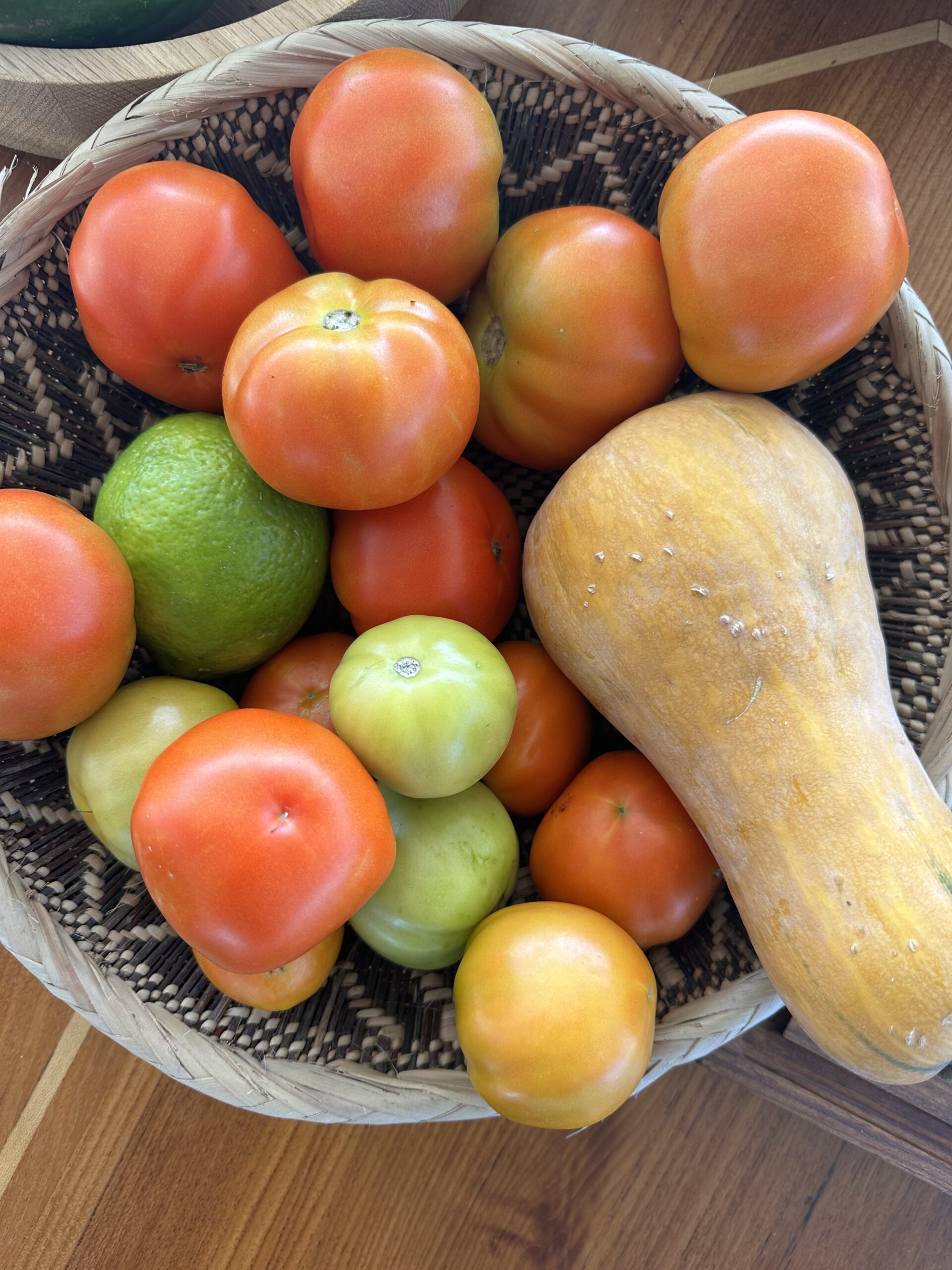
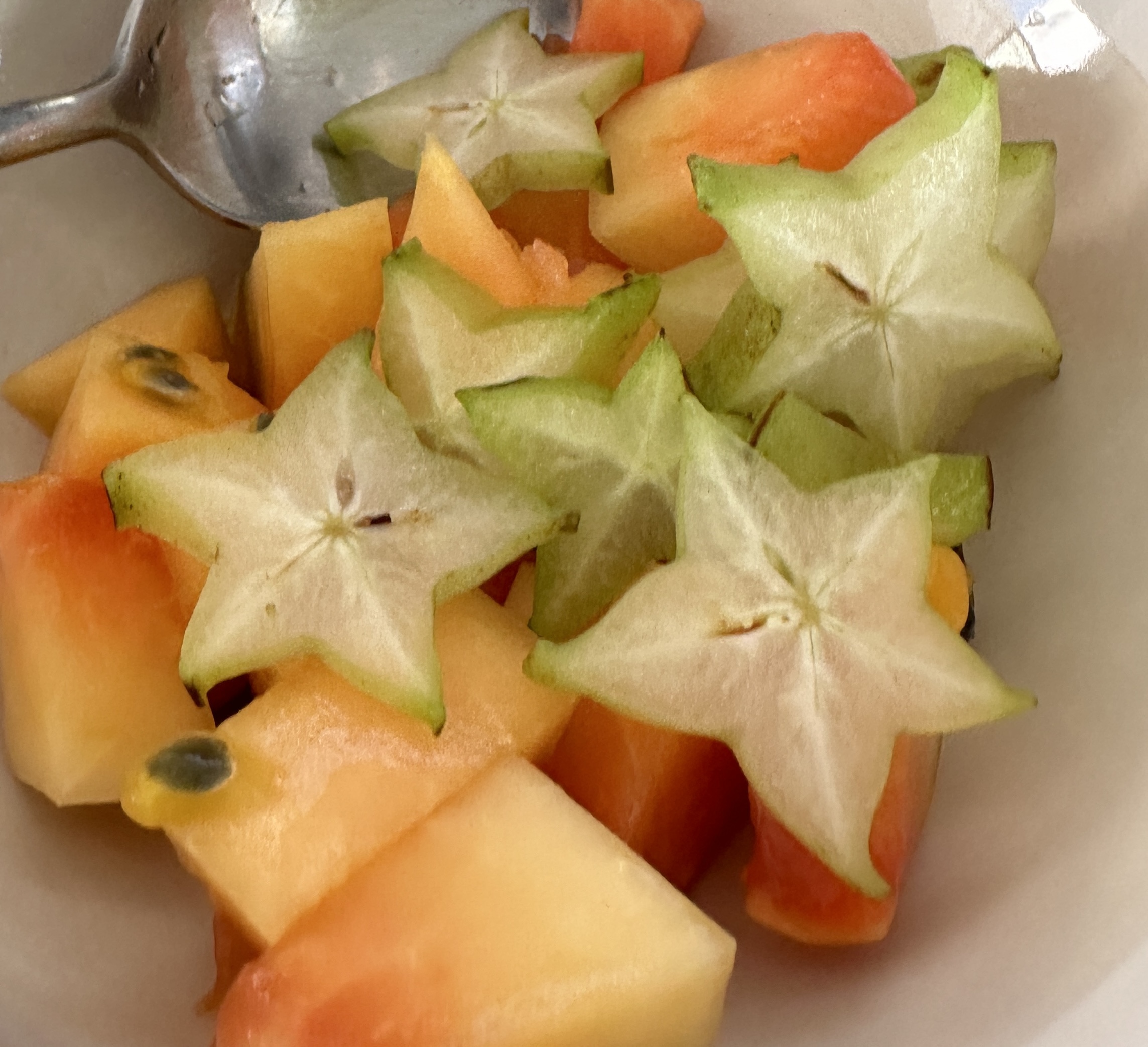

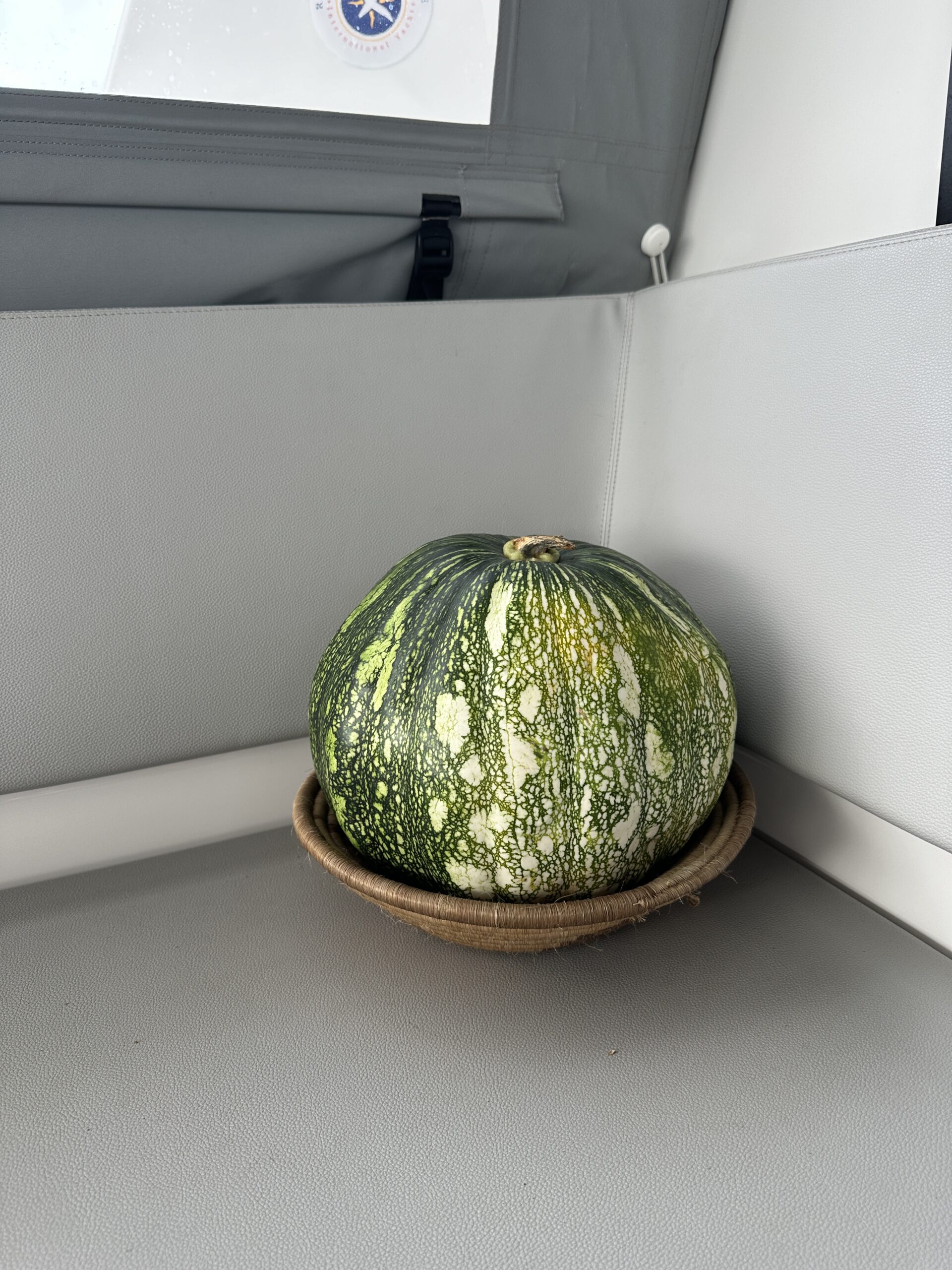
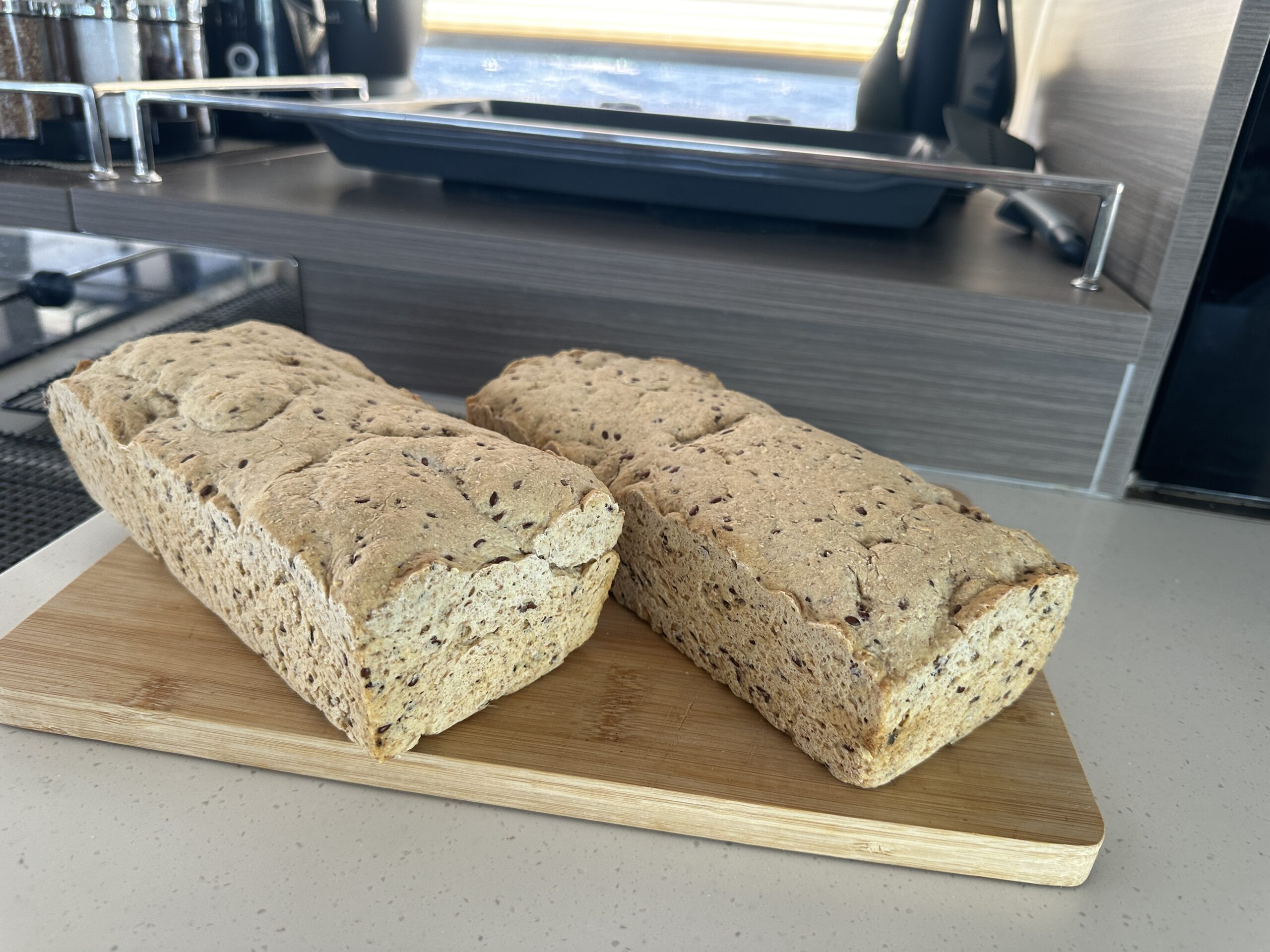
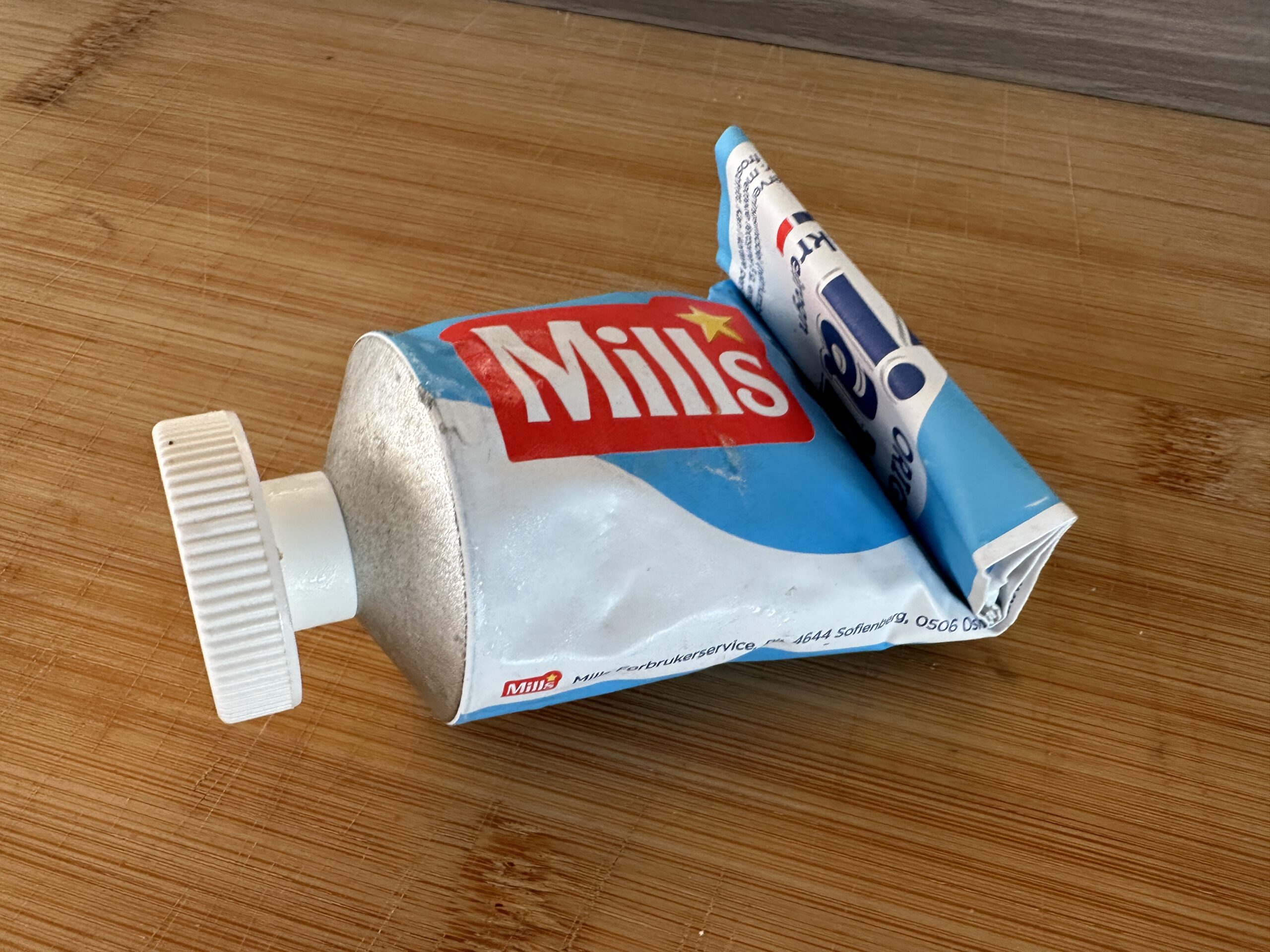
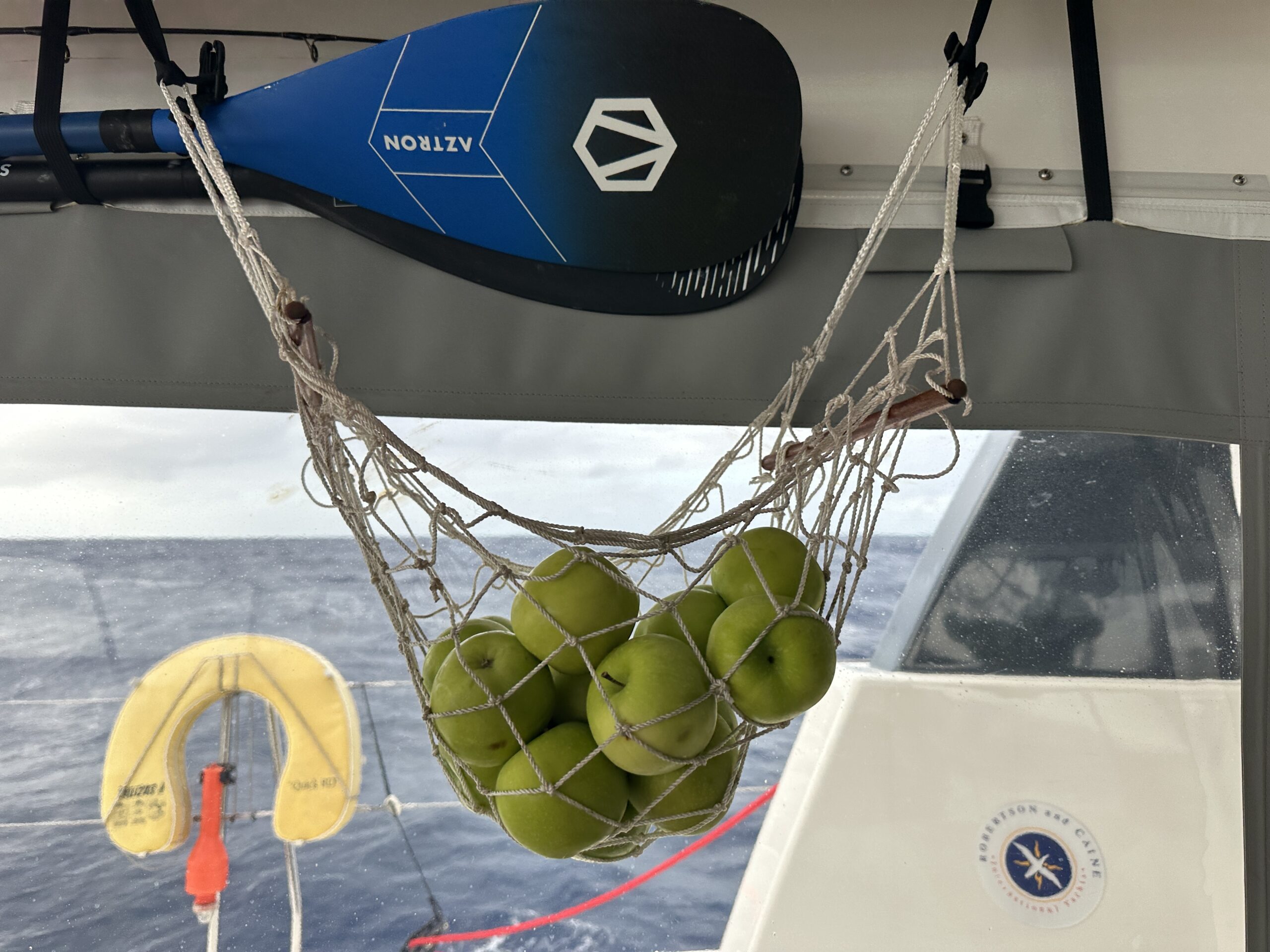
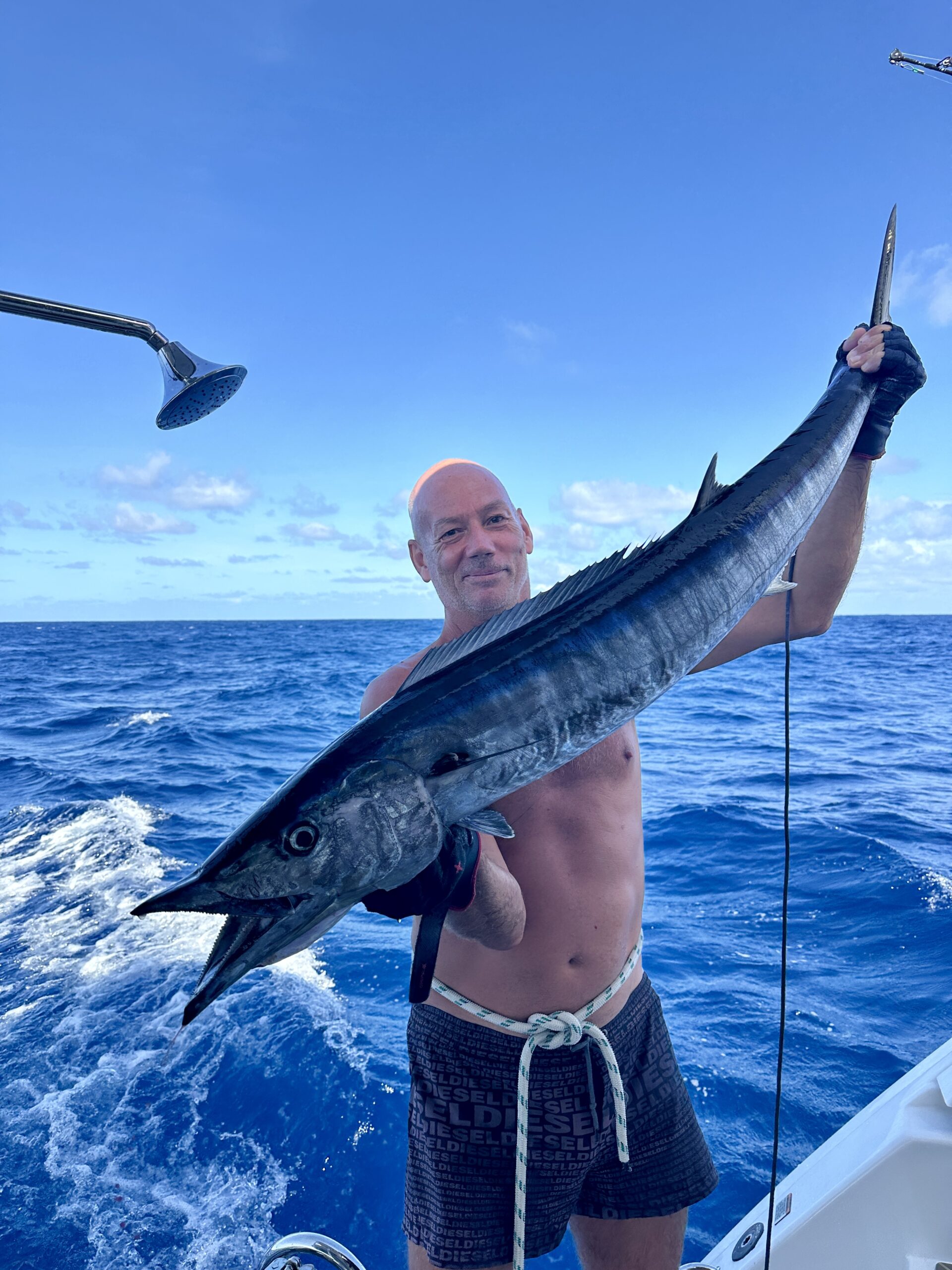
 The starry nights and the sunrises and sunsets have been amazing… There is of course no light pollution to be found, so the sky is blanketed with the most magic carpet of stars.
The starry nights and the sunrises and sunsets have been amazing… There is of course no light pollution to be found, so the sky is blanketed with the most magic carpet of stars.
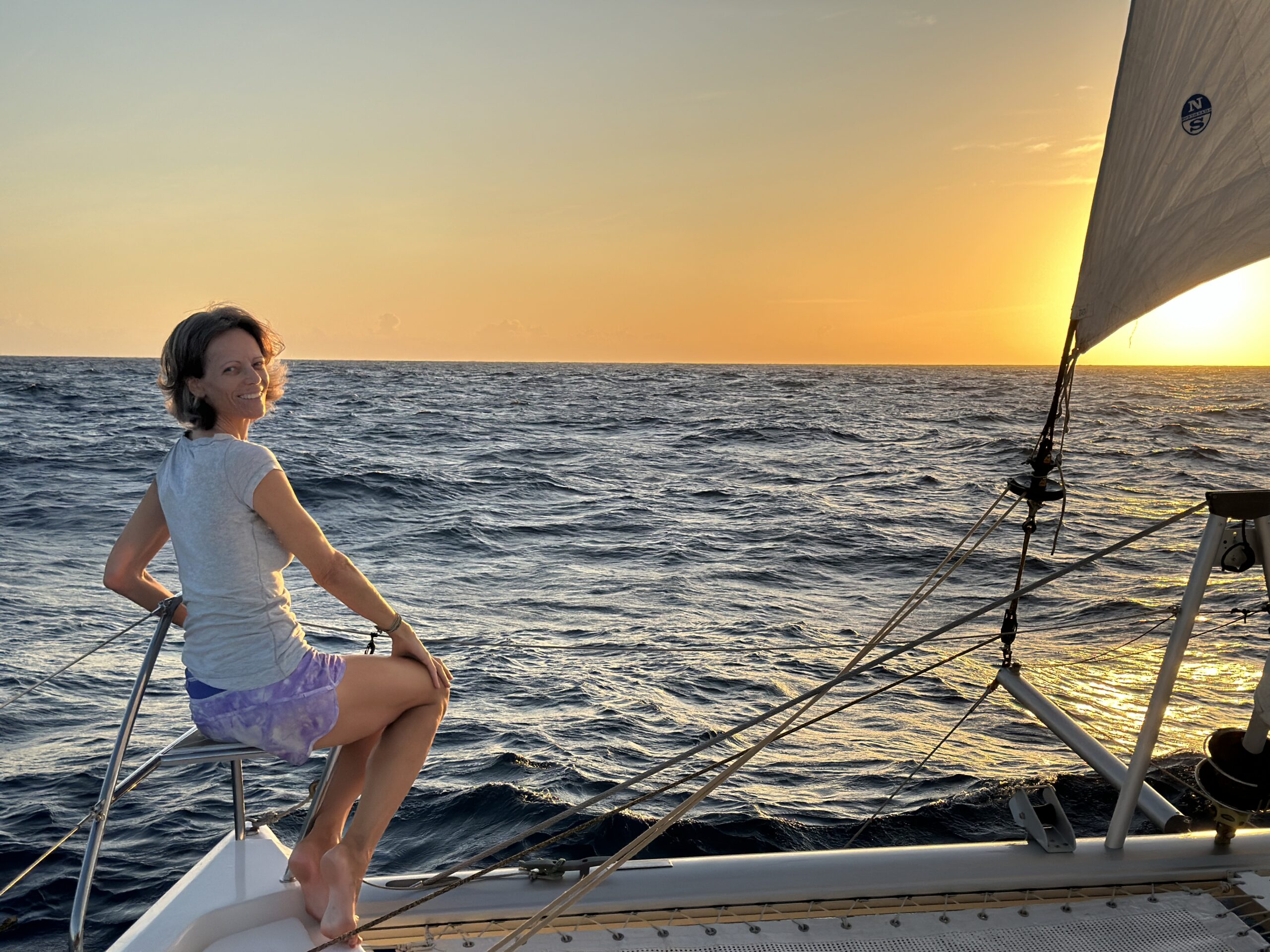
During the last week, the moon came out, which was very welcomed. Sitting in total darkness for long night watches is not always the most exciting thing, even though the stars are out. The moonlight also allowed us to approach our first anchorage at night.
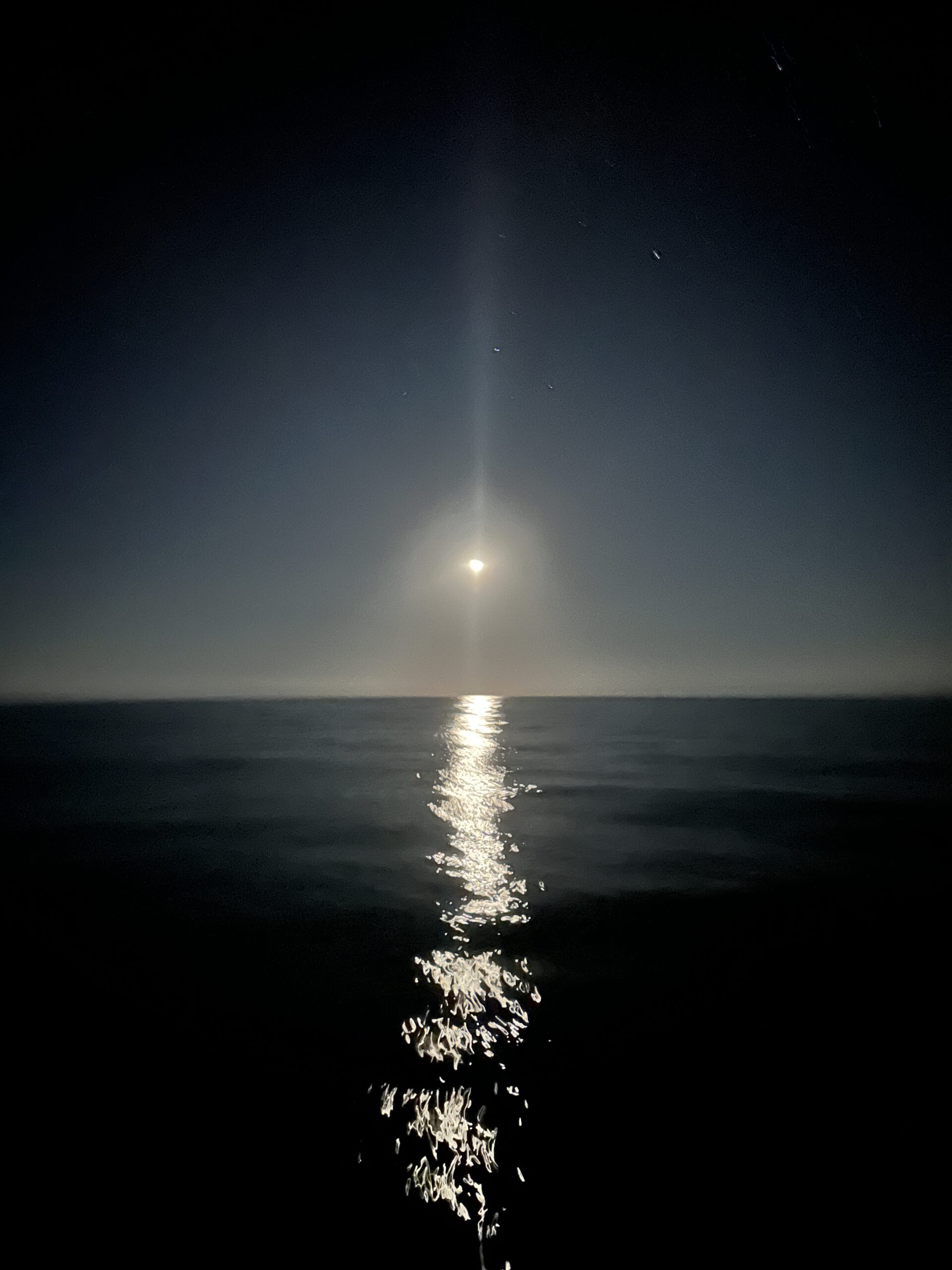
We saw land just before nightfall on May 17th, which is the Norwegian Constitution Day. The island of Ua Huka is a small inhabited island amongst the Northern Marquesas islands. We need to go to the bigger island called Nuku Hiva, to check into the country, but the gendarmerie office is closed for the weekend and national holidays. Seeing that this weekend is Pentecost, we’ll have to wait from Friday until Tuesday before we are actually legally in the country.
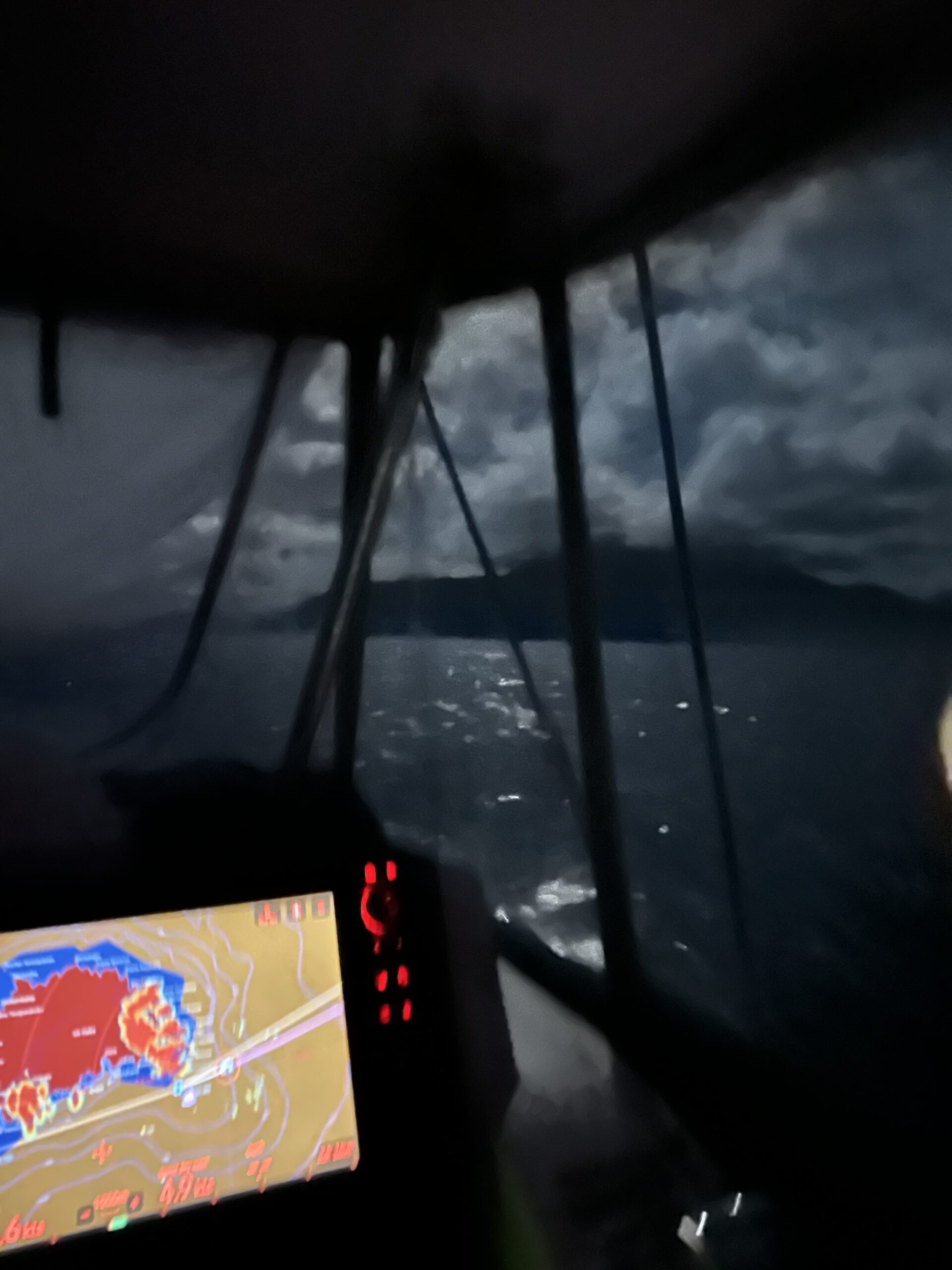
We entered into Bahie Haavei just after midnight, and found we were the only boat there. We are so proud to have made it across, and so relieved to be seeing land again! We celebrated in the traditional way, with an “ankerdram” (shot) – and it of course had to be Norwegian Aquavit. We have found a quiet bay where there supposedly are lobsters, so no need to be sad about having to wait here for a few days. Now we’ll sleep for a few days…
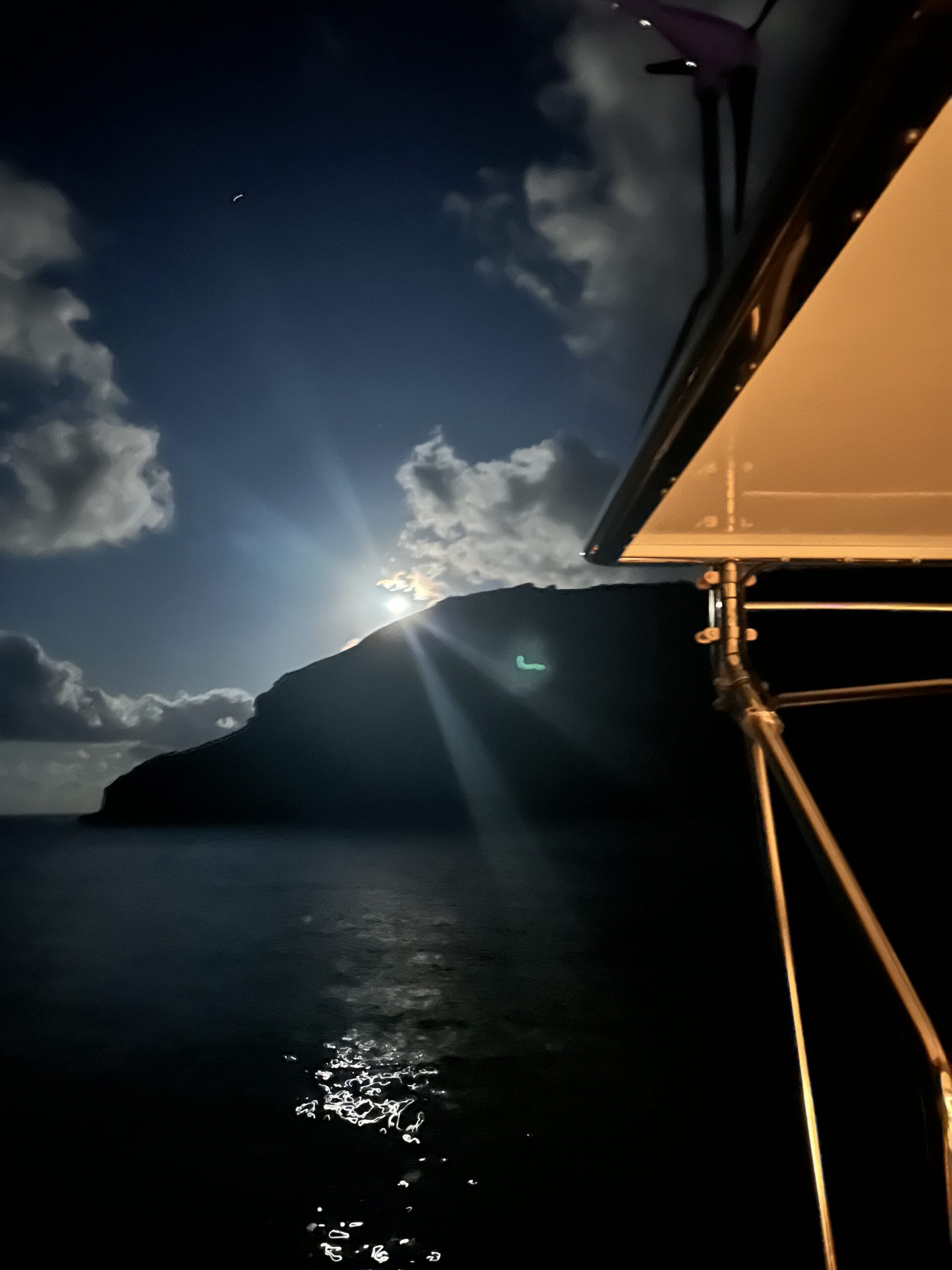
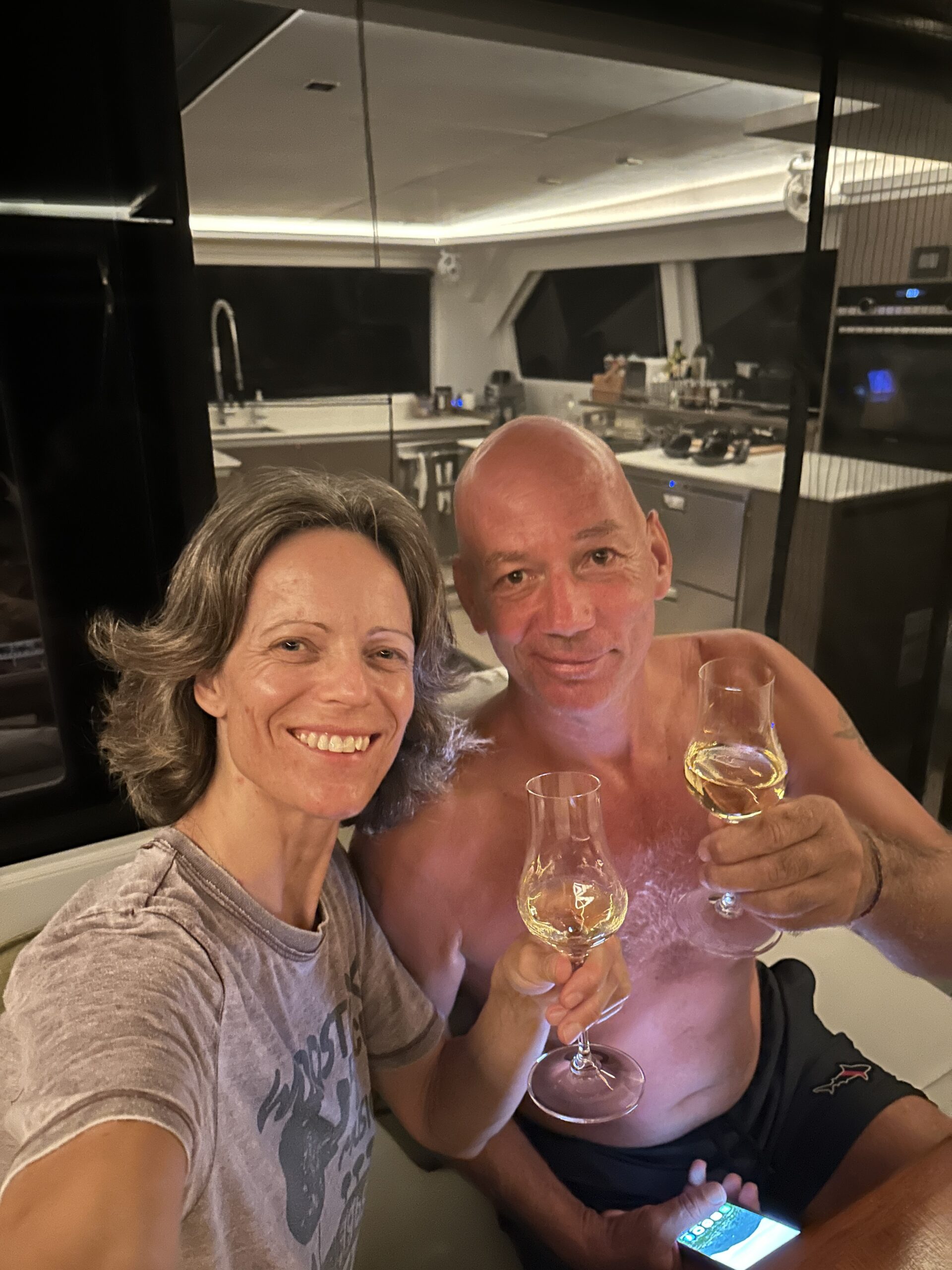
As always, the captain did an excellent job narrating our day to day experiences on this passage on the captain’s blog. More information from this passage is best explored there.
